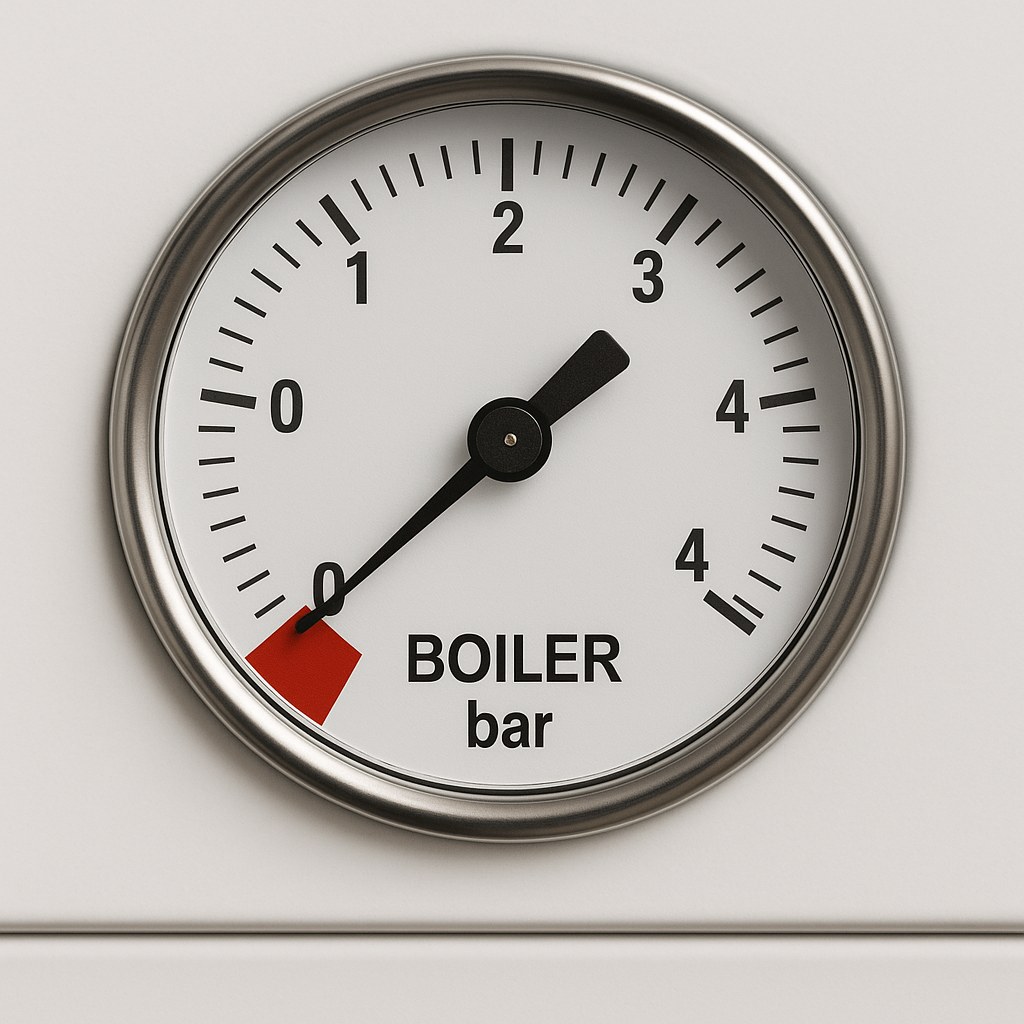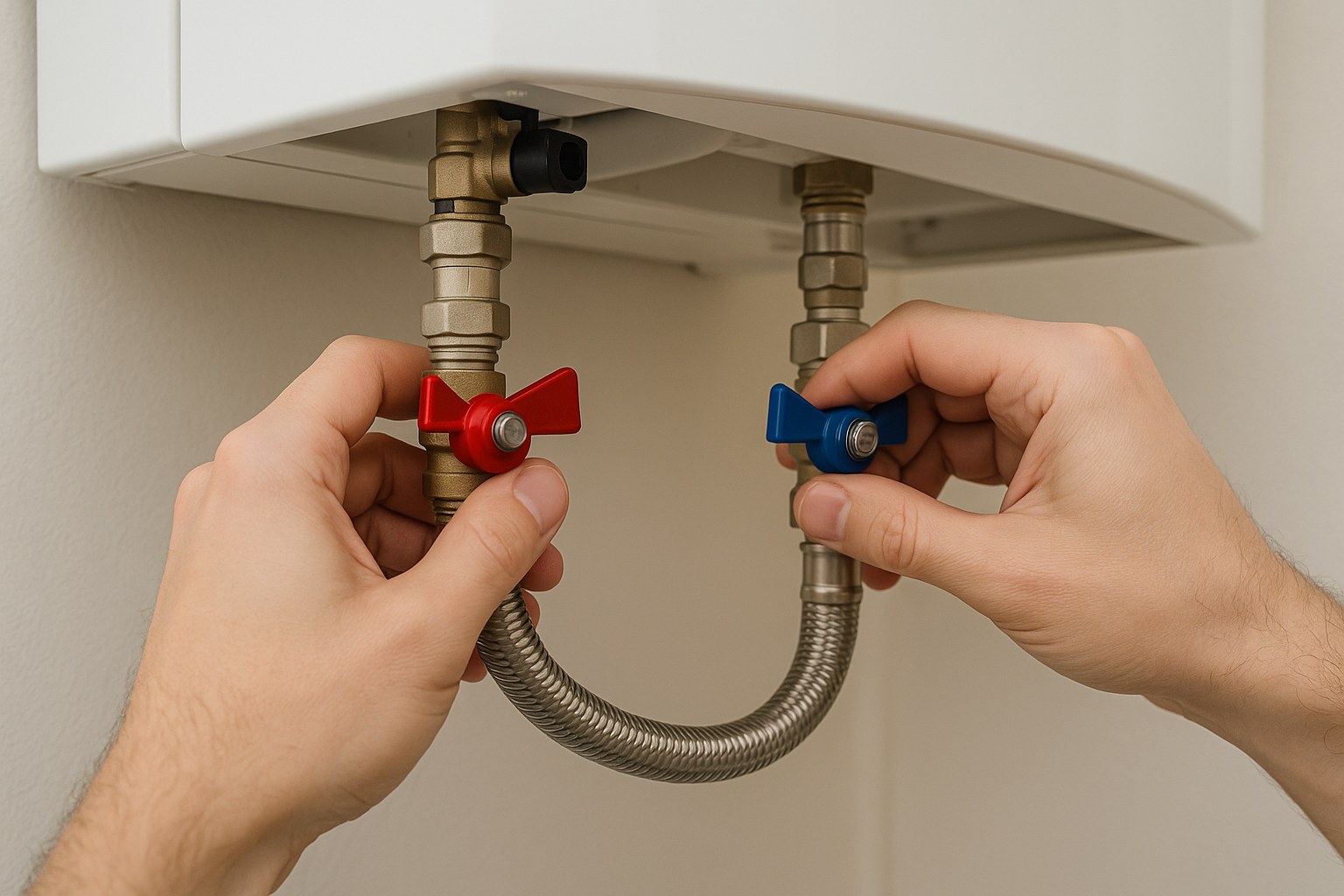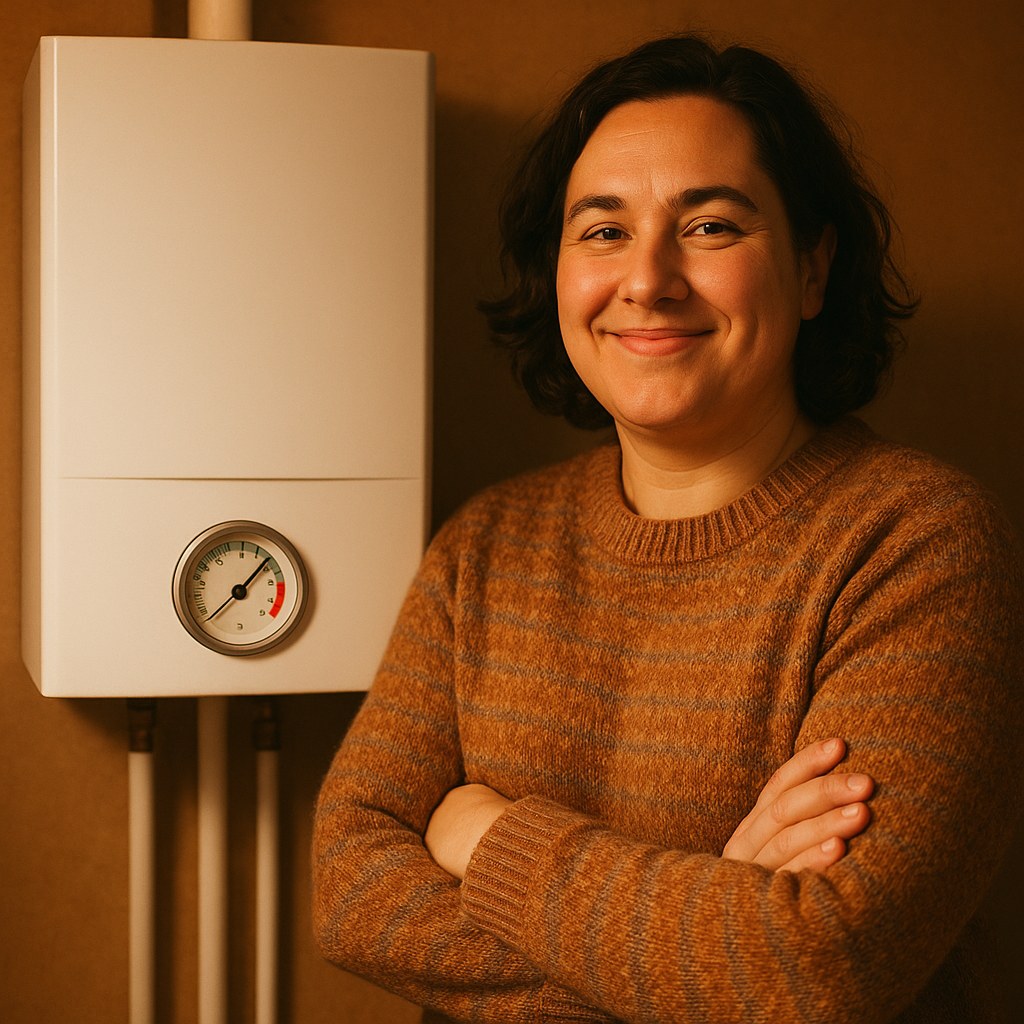Waking up to a cold house and the dreaded realization that there’s no hot water is one of a homeowner's least favorite surprises. Before you start worrying about a massive repair bill, take a deep breath and check your boiler. One of the most common reasons for a heating system to go on strike is simple: the pressure is too low.
Low boiler pressure can cause your radiators to go cold and your hot water to stop running. The good news is that this is often an issue you can fix yourself in under an hour, without needing to call an expensive technician.
In this guide, we'll walk you through everything you need to know, just like a friendly expert on the phone. We’ll help you confirm the problem, identify your boiler type, and safely restore the pressure to get your home warm and cozy again.
Why Does Boiler Pressure Drop?
Before we jump into the fix, it helps to understand what’s happening inside your heating system. The water in your boiler and radiators needs to be at a specific pressure to circulate effectively. If the pressure drops, the system's safety features will often shut the boiler down to prevent damage.
Here are the most common reasons for a pressure drop:
- Bleeding Radiators: If you’ve recently bled your radiators to release trapped air, you’ve also released a small amount of water, which can cause the system pressure to fall.
- A Water Leak: Even a tiny, slow leak somewhere in your heating system—from a radiator valve, a pipe joint, or within the boiler itself—can lead to a gradual loss of pressure over time.
- A Faulty Expansion Vessel: This component manages pressure fluctuations as the water heats and cools. If it fails, your system may lose pressure.
Now, let's figure out what's going on with your system and get it fixed.
Step-by-Step Guide to Fixing Low Boiler Pressure
Step 1: Confirm the Pressure Is Actually Low
First things first, let’s make sure low pressure is the real issue. Sometimes, a pressure gauge can get stuck.
- Turn Off the Boiler: Find the power switch for your boiler and turn it off. Let the system cool down for about 15-20 minutes. Checking the pressure when the system is hot can give you an inaccurate reading.
- Locate the Pressure Gauge: You’ll find this on the front of your boiler. It’s a dial, usually with green and red zones. The unit of measurement is "bar."
- Read the Gauge: For most residential boilers, the normal operating pressure when cold is between 1 and 1.5 bar. This is typically indicated by a green zone on the gauge. If the needle is below 1 bar, often in a red zone, then your pressure is too low.
- Give it a Gentle Tap: Using the back of a pen or your knuckle, gently tap the gauge. If the needle jumps up into the green zone, the gauge itself is faulty and needs to be replaced by a professional. If it stays put below 1 bar, you’ve confirmed the pressure is low.

Step 2: Identify Your Boiler Type
The method for re-pressurizing your system depends on the type of boiler you have. There are two main categories: sealed systems (most common) and open-vented systems (older).
- Sealed Systems (Combi and System Boilers): These are modern, pressurized systems. If you have a combi boiler (which provides instant hot water without a separate hot water tank) or a system boiler (which has a separate hot water cylinder but no tank in the loft), you have a sealed system. A key giveaway is the presence of a pressure gauge.
- Open-Vented Systems (Conventional Boilers): These older systems use gravity and a small feed and expansion tank (usually in the loft) to maintain the water level. They don't typically have a pressure gauge on the boiler itself.
If you’re unsure, look for a large hot water cylinder in an airing cupboard. If you don't have one, you likely have a combi boiler (a sealed system). If you do have a cylinder and a small water tank in your loft, you probably have an open-vented system.
Step 3: How to Re-pressurize a Sealed System (Combi or System Boiler)
This is the most common fix and it involves using something called a filling loop. The filling loop is a short, flexible hose that temporarily connects your heating system to your main water supply to top up the pressure.
- Locate the Filling Loop: Look underneath your boiler. You should see a flexible, braided hose with a small valve or lever at each end. Sometimes it’s built-in, and other times it’s a separate piece that you need to attach.
- Ensure the Boiler is Off: Double-check that the boiler is powered down and cool.
- Open the Valves: To start letting water in, you need to open the valves. Usually, you’ll turn them a quarter-turn until the handle is in line with the pipe. Open the first valve fully, and then open the second one slowly and carefully.
- Watch the Gauge: As you slowly open the second valve, you should hear water flowing into the system. Keep your eyes glued to the pressure gauge. You want to see the needle rise into the green zone, aiming for 1.5 bar.
- Close the Valves: Once the needle hits 1.5 bar, immediately close the second valve, and then the first one, in the reverse order you opened them. It's crucial to close them tightly to prevent over-pressurizing the system.
- Detach the Hose (If Applicable): If your filling loop is detachable, you should remove it now. Leaving it connected can be against regulations in some areas.
- Restart the Boiler: Turn the power back on. The boiler should now fire up, and your heating and hot water should return.

What If the Pressure Drops Again? Check for Leaks
You’ve successfully re-pressurized the system, but an hour later, the pressure is low again. This is a tell-tale sign of a leak somewhere in your system.
Finding a leak can be tricky, but start with a visual inspection:
- Radiators and Valves: Check underneath every radiator and around its valves for any signs of dripping or water stains.
- Pipe Joints: Look at any visible pipework, especially at the joints, for moisture.
- Under the Boiler: Check the floor directly under the boiler for any damp patches or puddles.
If you find a leak, you've found the root cause. A small drip from a radiator valve might be something you can fix yourself, but for anything else, it's best to call an HVAC technician. A persistent, hidden leak can cause serious water damage over time.
Advanced Check: The Expansion Vessel
If you can't find a leak but your pressure keeps dropping or fluctuating wildly, the problem could be the expansion vessel. This is a more complex issue, and for most homeowners, this is the point where we'd recommend calling a professional. A faulty expansion vessel requires a technician to safely depressurize the system and either recharge or replace the vessel.
Fixing Low Pressure on an Open-Vented System
If you have an older, open-vented system, the process is different. The pressure is managed by a small feed and expansion (F&E) tank in your loft.
- Find the F&E Tank: It's a small, usually black plastic tank located in your loft, separate from the large cold water storage tank.
- Check the Water Level: The water level in this tank should be about half full. If it’s empty or very low, that’s your problem.
- Check the Ball Valve: Just like in a toilet cistern, this tank has a ball valve with a float. Sometimes, this float can get stuck. Gently push the float arm down to see if water starts flowing in. If it's stuck, a little jiggle can often free it. If the valve is broken, it will need replacing.
Once the tank refills, the system should operate normally. You may also need to bleed your radiators after this to remove any air that entered the system.
How Much Does It Cost to Fix Low Boiler Pressure?
- DIY: If you just need to re-pressurize the system, the cost is $0.
- Hiring a Professional: If you're not comfortable doing it yourself or if you suspect a leak, hiring an HVAC technician is the way to go. According to HomeAdvisor, a general boiler repair service call can range from $150 to $500, depending on the issue. A simple re-pressurization and inspection would be on the lower end of that scale.

Final Thoughts
Dealing with low boiler pressure can feel daunting, but it's often a straightforward fix that you can handle yourself. By following these steps, you can diagnose the problem, restore heat and hot water to your home, and save yourself the cost of a service call.
Remember to check your boiler pressure periodically, especially after bleeding radiators or during the start of the cold season, to catch any issues early.
For more expert home maintenance guides, personalized reminders, and a direct line to trusted professionals when you need them, download the Casa app today. Casa empowers you to manage your home with confidence, putting expert help right in your pocket. Don't let home maintenance be a mystery—let Casa show you the way.


